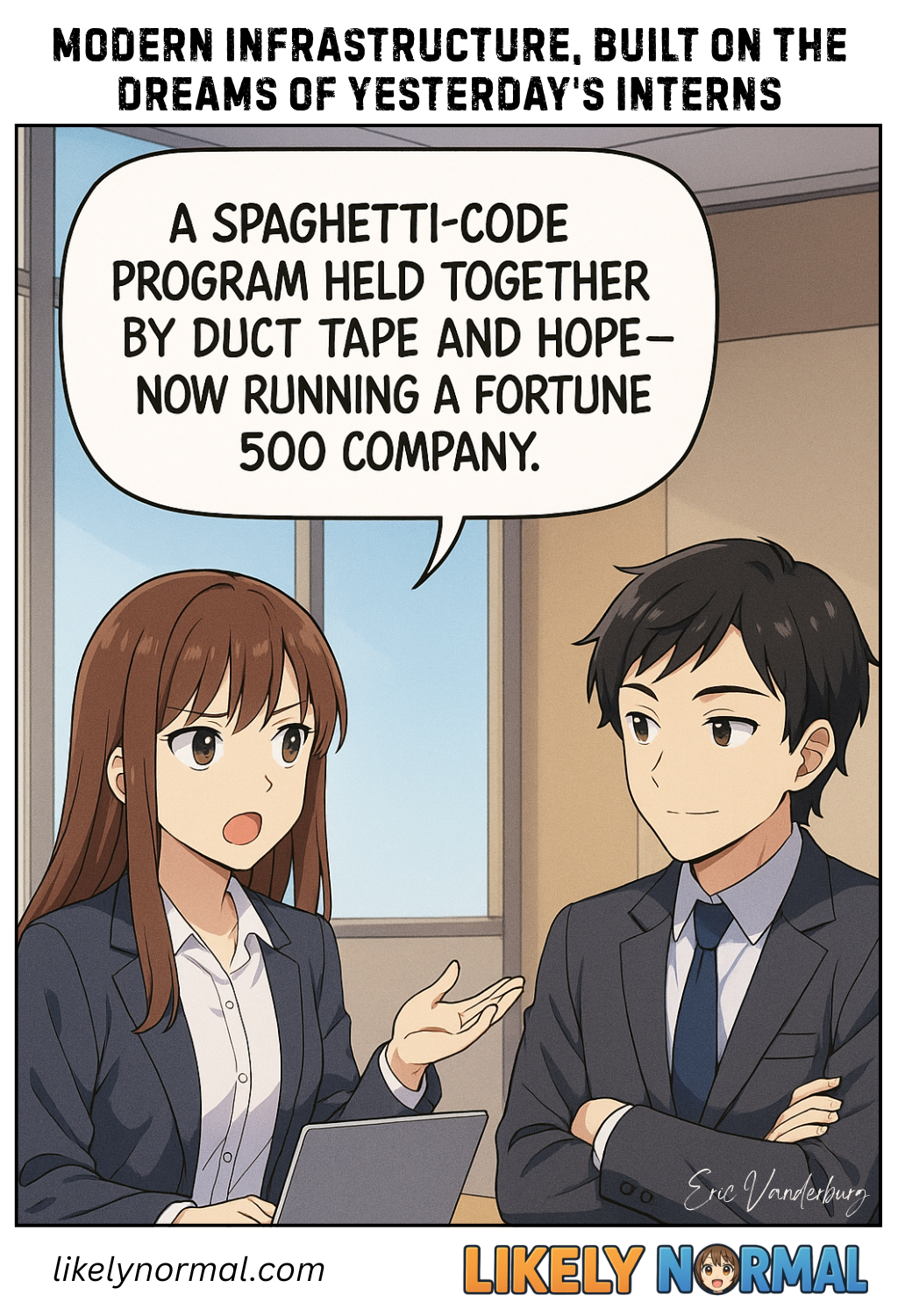Bug Free But Risky
Every big company has that one ancient software system that’s basically held together by digital duct tape, the hopes and dreams of long-departed developers, and a suspicious number of comments that just say “DON’T TOUCH THIS – SERIOUSLY.” It’s the kind of code that looks like someone tried to build a skyscraper out of spaghetti—noodles everywhere, zero structural integrity, and yet somehow, it’s still standing (for now). Sure, it’s technically “bug-free,” but only because everyone’s too terrified to poke it in case the whole thing collapses like a house of cards in a wind tunnel.
The real kicker? This monstrosity isn’t just there—it’s business-critical. The entire accounting department runs on it, the CEO brags about its “reliability,” and no one dares suggest a rewrite because “it works, okay?!” Translation: We have no idea how, but let’s not jinx it. Meanwhile, the IT team treats every update like a bomb-defusal exercise, whispering prayers to the tech gods as they gently apply another “temporary” fix that’s been in production since 2012.
So here’s to legacy systems—the digital equivalent of a 1998 Honda Civic with 300,000 miles on it. It shouldn’t still be running, it definitely smells weird, and one day it will explode spectacularly. But until then? “If it ain’t broke, don’t ask how it’s still working.”

Discussion ¬